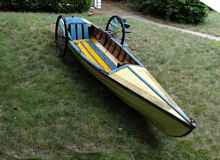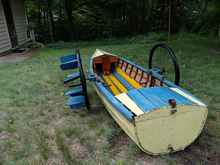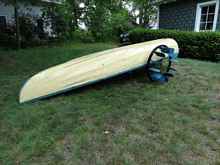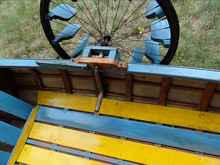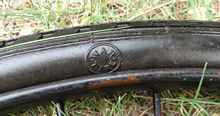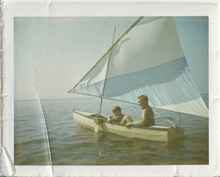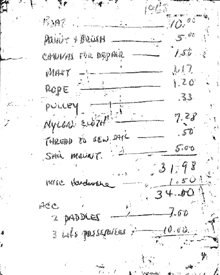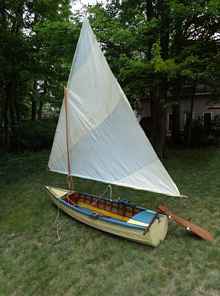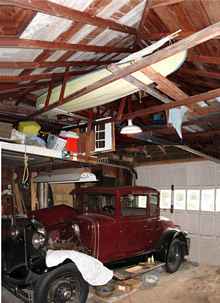My family has had a summer cottage in a community on the southeastern shore of Lake Michigan since 1966. One of the traditions of the community is Junk Day which is usually held mid-June. A significant percentage of items left out on the curb get "recycled" by other members of the community. On Junk Day 1967 one of our neighbors was putting his home-built kayak on the curb when my father saw it and insisted on purchasing it from him. Thus begins the story of my father's first boat.
According to the original builder, it was built as part of a Chicago Park District project sometime after WWII. Construction was canvas over a pine frame held together with copper rivets. With an LOA 10’ 6” and a beam of 32”, this is a small boat. Some of the canvas had rotted away but otherwise the boat was in good shape. After repairing the canvas and painting the boat the colors of the Swedish flag it was easily transported on its “War Tires” up and over the large sand dune to Lake Michigan.
A boat like this is limited to only the calm, and therefore windless, days on Lake Michigan. Propelling the short boat with the paddle wheels was a slow process. Any attempt at a speed greater than hull speed brought copious amounts of water into the cockpit. Turns were slow. The round hull section made it rather tippy. But it provided a lot of entertainment for the family that summer.
On Junk Day 1968 my father found a discarded aluminum golf cart on the curb. "Hey, with a little bit of plywood this would make a great rudder." Thus, the second chapter of the boat began. The flat aluminum piece that supported the bottom of the golf bag was easily bent up to keep the plywood in place and then glued in place with epoxy, pintles were secured with screws. (When I was growing up I thought that the handyman's secret weapons were baling wire and epoxy glue.) A bonus to using the golf cart is that we could fold down the handle to make it easier to carry. In the picture below of me and my father out for a sail you can see the tiller is the handle of the golf cart. Surprisingly, the golf cart rudder proved too Rube Goldberg-ish even for my father. He eventually replaced it with a mahogany rudder.
The next step was the sail. In those days, 12-foot long bamboo poles were used in the center of carpet rolls. A trip to the local carpet store was all it took to get free spars for the sail. Nylon fabric (Swedish blue and yellow, of course) and thread were obtained from the local fabric store. I know that my father sewed the sail himself. I am sure that my mother would have done it for him if he would have asked, but I think that he wanted to be self-sufficient when it came to the boat. The double dagger boards were made from 1x6 pine boards. A functional sailboat for just $34!
The sailboat was used for only 2 years. On Lake Michigan, windy days bring big waves and so it is not a practical location for such a boat. The original boat was relegated to the rafters of the garage in 1970 and it has been there, above my father's 1931 Model A Ford, ever since.
We moved on to beach boats. The first one was a 12' Butterfly and currently I own a 14' Barnett 1400. I am currently building my first wooden boat, a Ross Lillistone 9' Water Rat.
I still prefer small boats. I tell my friends who own big sailboats that 1) If I am not getting wet then I am not sailing and 2) I have never owned a sailboat that weighed more than I did.
|





